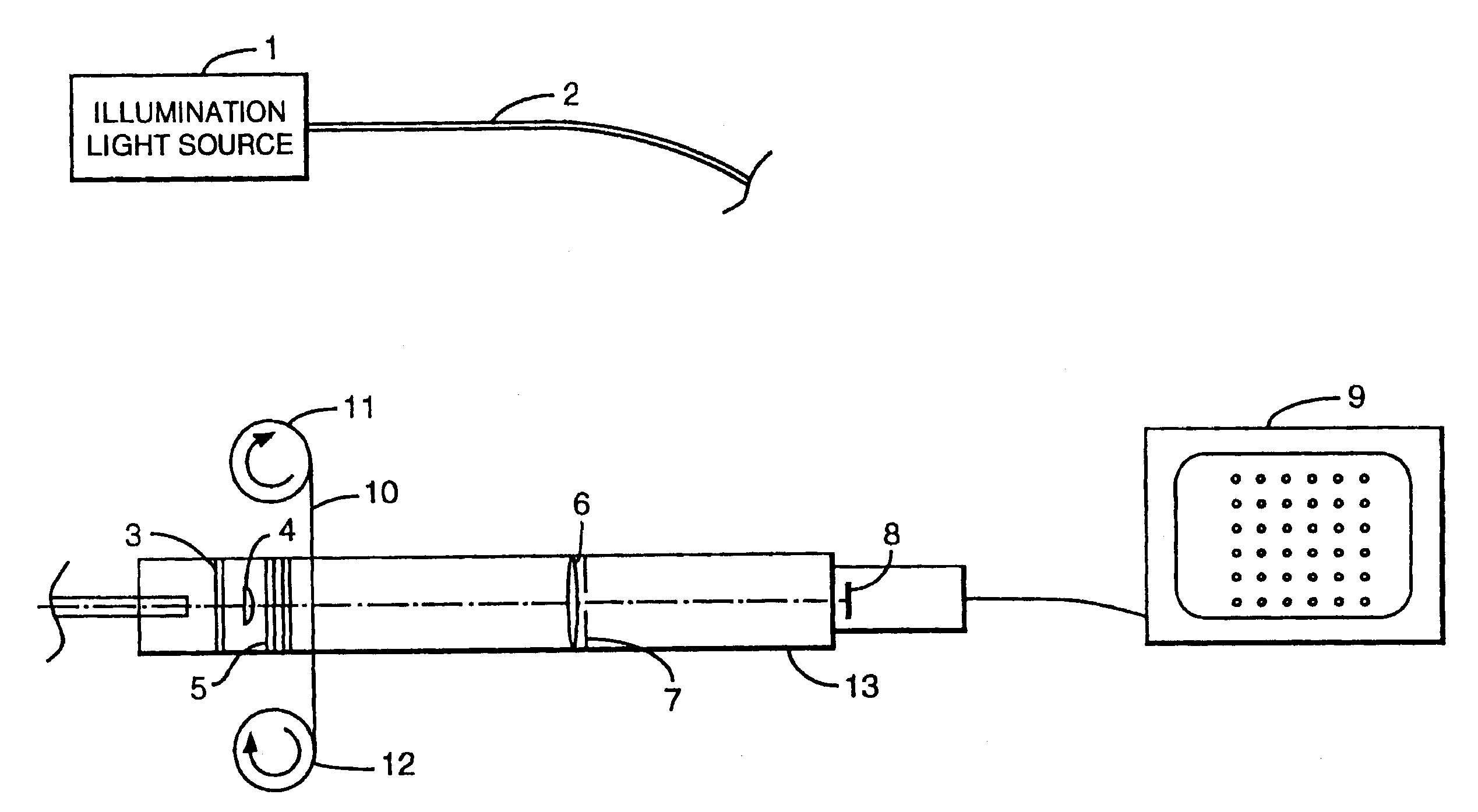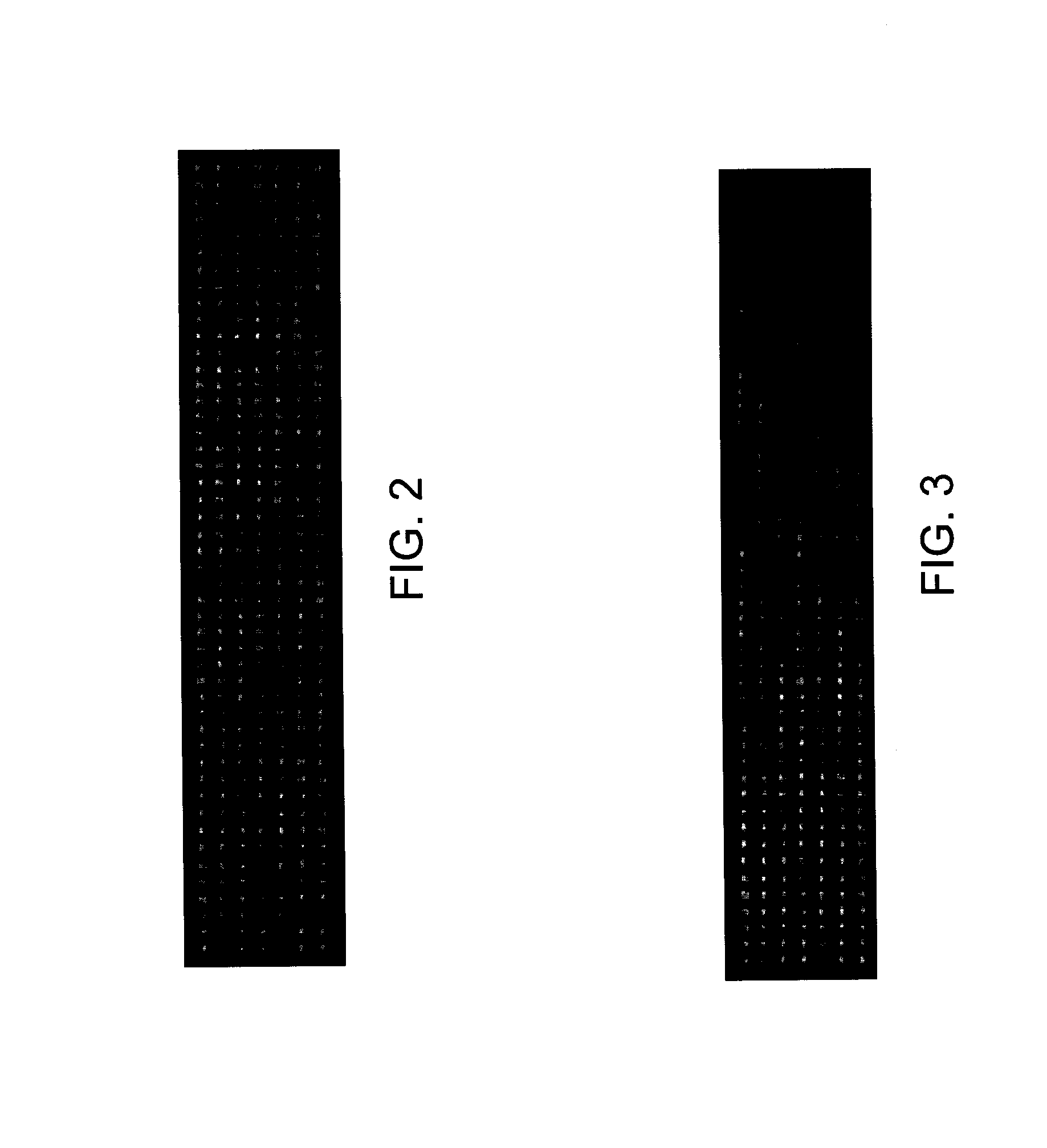Method and device for non-destructive analysis of perforations in a material
a perforation and non-destructive technology, applied in the field of non-destructive analysis, can solve the problems of insufficient size or shape, large holes, and large number of holes formed, and achieve the effects of small features and fast, accurate and efficient inspection
- Summary
- Abstract
- Description
- Claims
- Application Information
AI Technical Summary
Benefits of technology
Problems solved by technology
Method used
Image
Examples
example 1
[0076]This experiment demonstrates the use of a method of the invention to inspect holes in a sample. A mercury arc lamp of the type commonly used for ultraviolet adhesive curing was used for the light source. The ultraviolet portion of the spectrum was specifically isolated between about 300 and 400 nanometers utilizing appropriate reflective and transmissive optical filter elements well known to those skilled in the art. This ultraviolet portion consisted mainly of the strong emission line from mercury at 365 nanometers. The filtered light was guided via a commonly used liquid light guide which transmits near ultraviolet in the spectral range selected. At the output of the fiber, a diffuse reflectance glass was used to provide additional homogenization of the beam exiting the guide. A condensing lens was then used to collimate the light and illuminate the sample to be inspected. The sample was a polyimide film. Spectral filters were located in the collimated light to ensure the re...
example 2
[0077]This experiment demonstrates the use of a method of the invention to inspect holes in a sample. A mercury arc lamp of the type commonly used for ultraviolet adhesive curing was used for the light source. The ultraviolet portion of the spectrum was specifically isolated between about 300 and 400 nanometers utilizing appropriate reflective and transmissive optical filter elements well known to those skilled in the art. This ultraviolet portion consisted mainly of the strong emission line from mercury at 365 nanometers. The filtered light was guided via a commonly used liquid light guide which transmits near ultraviolet in the spectral range selected. At the output of the fiber, a diffuse reflectance glass was used to provide additional homogenization of the beam exiting the guide. A condensing lens was then used to collimate the light and illuminate the sample to be inspected. The sample was a polyimide film. Spectral filters were located in the collimated light to ensure the re...
example 3
[0078]This experiment demonstrates the use of a method of the invention to form and inspect spots in a 25 micrometer thick polyimide sheet. The energy source used was a frequency tripled niobium yttrium based LASER emitting 355 nm wavelength pulses, each having approximately 0.4 to about 0.6 microjoule of energy. The LASER was focused on spot having a diameter of about 12 to about 15 micrometer and produced a hole with an exit diameter between about 0.4 and about 0.6 micrometer. The formed hole passed approximately 0.5 to about 10 picojoules which was detected by a silicone diode detector. Based on the signal from the detector, a discrete electronic feedback circuit comprising a comparator, a reference voltage and logic gates sent an electronic signal to the LASER to stop generating light pulses.
[0079]Several sets of pore arrays were fabricated using the same light source and optical system drilling one pore at a time. Some arrays were produced using a predetermined number of pulses...
PUM
| Property | Measurement | Unit |
|---|---|---|
| diameter | aaaaa | aaaaa |
| diameter | aaaaa | aaaaa |
| diameter | aaaaa | aaaaa |
Abstract
Description
Claims
Application Information
 Login to View More
Login to View More - R&D
- Intellectual Property
- Life Sciences
- Materials
- Tech Scout
- Unparalleled Data Quality
- Higher Quality Content
- 60% Fewer Hallucinations
Browse by: Latest US Patents, China's latest patents, Technical Efficacy Thesaurus, Application Domain, Technology Topic, Popular Technical Reports.
© 2025 PatSnap. All rights reserved.Legal|Privacy policy|Modern Slavery Act Transparency Statement|Sitemap|About US| Contact US: help@patsnap.com



